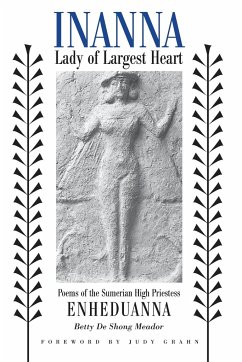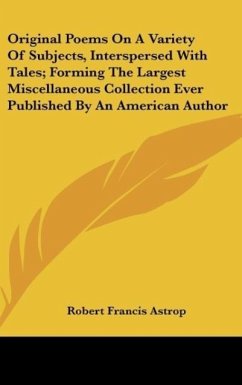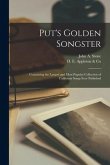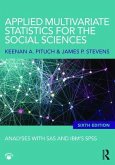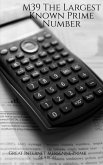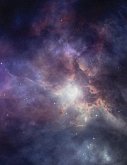29,99 €
inkl. MwSt.
Versandfertig in 1-2 Wochen

15 °P sammeln
- Broschiertes Buch
- Merkliste
- Auf die Merkliste
- Bewerten Bewerten
- Teilen
- Produkt teilen
- Produkterinnerung
- Produkterinnerung
Translations of the oldest written literature to have a known author: the Inanna poems by the Sumerian high priestess Enheduanna.
Andere Kunden interessierten sich auch für
![Original Poems On A Variety Of Subjects, Interspersed With Tales; Forming The Largest Miscellaneous Collection Ever Published By An American Author Original Poems On A Variety Of Subjects, Interspersed With Tales; Forming The Largest Miscellaneous Collection Ever Published By An American Author]() Robert Francis AstropOriginal Poems On A Variety Of Subjects, Interspersed With Tales; Forming The Largest Miscellaneous Collection Ever Published By An American Author30,99 €
Robert Francis AstropOriginal Poems On A Variety Of Subjects, Interspersed With Tales; Forming The Largest Miscellaneous Collection Ever Published By An American Author30,99 €![Put's Golden Songster: Containing the Largest and Most Popular Collection of California Songs Ever Published Put's Golden Songster: Containing the Largest and Most Popular Collection of California Songs Ever Published]() Put's Golden Songster: Containing the Largest and Most Popular Collection of California Songs Ever Published20,99 €
Put's Golden Songster: Containing the Largest and Most Popular Collection of California Songs Ever Published20,99 €![Applied Multivariate Statistics for the Social Sciences Applied Multivariate Statistics for the Social Sciences]() Keenan A. PituchApplied Multivariate Statistics for the Social Sciences122,99 €
Keenan A. PituchApplied Multivariate Statistics for the Social Sciences122,99 €![M39 The Largest Known Prime Number M39 The Largest Known Prime Number]() Great InternetM39 The Largest Known Prime Number28,99 €
Great InternetM39 The Largest Known Prime Number28,99 €![Mahan Air: Iran's Largest Airline Mahan Air: Iran's Largest Airline]() Babak TaghvaeeMahan Air: Iran's Largest Airline24,99 €
Babak TaghvaeeMahan Air: Iran's Largest Airline24,99 €![Robert Walker Haulage Ltd: The History of the Uk's Largest Fork Truck Transport Company Robert Walker Haulage Ltd: The History of the Uk's Largest Fork Truck Transport Company]() Carl JarmanRobert Walker Haulage Ltd: The History of the Uk's Largest Fork Truck Transport Company28,99 €
Carl JarmanRobert Walker Haulage Ltd: The History of the Uk's Largest Fork Truck Transport Company28,99 €![The World's Largest Sketchbook The World's Largest Sketchbook]() Young Dreamers PressThe World's Largest Sketchbook25,99 €
Young Dreamers PressThe World's Largest Sketchbook25,99 €-
-
-
Translations of the oldest written literature to have a known author: the Inanna poems by the Sumerian high priestess Enheduanna.
Hinweis: Dieser Artikel kann nur an eine deutsche Lieferadresse ausgeliefert werden.
Hinweis: Dieser Artikel kann nur an eine deutsche Lieferadresse ausgeliefert werden.
Produktdetails
- Produktdetails
- Verlag: University of Texas Press
- Seitenzahl: 246
- Erscheinungstermin: 1. Februar 2001
- Englisch
- Abmessung: 229mm x 152mm x 15mm
- Gewicht: 366g
- ISBN-13: 9780292752429
- ISBN-10: 0292752423
- Artikelnr.: 22324136
- Herstellerkennzeichnung
- Libri GmbH
- Europaallee 1
- 36244 Bad Hersfeld
- gpsr@libri.de
- Verlag: University of Texas Press
- Seitenzahl: 246
- Erscheinungstermin: 1. Februar 2001
- Englisch
- Abmessung: 229mm x 152mm x 15mm
- Gewicht: 366g
- ISBN-13: 9780292752429
- ISBN-10: 0292752423
- Artikelnr.: 22324136
- Herstellerkennzeichnung
- Libri GmbH
- Europaallee 1
- 36244 Bad Hersfeld
- gpsr@libri.de
By Betty De Shong Meador
1. Foreword by Judy Grahn
2. Acknowledgments
3. Part I. The Cultural and Historical Context
1. 1. Introduction: "Through the Gate of Wonder": An early cuneiform
sign of the goddess Inanna appears in the author's dream
2. 2. "Great Lady Inanna":Paradoxical goddess encompasses heaven, earth,
and the underworld
3. 3. "The Robes of the Old, Old Gods": Ancient mythologems: Neolithic
Mesopotamian parallels to Inanna's iconography
4. 4. Unearthing Enheduanna: Leonard Woolley's excavations at Ur
identify the high priestess Enheduanna
5. 5. Enheduanna's Life Story: Sargon's daughter Enheduanna matures in
an era of new consciousness of the individual
6. 6. The High Priestess at Ur: Enheduanna manages the extensive temple
estate and directs ritual tending of moon goddess and god from her
quarters, the house of women, the gipar.
7. 7. The Poems and Hymns of Enheduanna: The first literary texts
disclose the emotion and imagery of the poet and the systematic
theology of the priestess
4. Part II. The Three Inanna Poems: Introduction
1. 8. The First Poem: Inanna and Ebih
o Introduction
o Inanna and Ebih: Text of the Poem
o "Terror Folds in Her Robes": Inanna, the force of nature,
combats a mountain paradise
o "I Will Not Go There With You": The sky god An deserts Inanna
o "Fury Overturns Her Heart": Inanna assumes her full stature and
autonomy
o "Because You Puff Yourself Up": Parallels between Ebih and the
creation story in Genesis
2. 9. The Second Poem: Lady of Largest Heart
o Introduction
o Lady of Largest Heart: Text of the Poem
o "Eldest Daughter of the Moon": The paradox of dark and light
o "The Carved-Out Ground Plan of Heaven and Earth": Inanna's
world without illusion
o "Look at Your Tormenting Emotions": Primary emotions and the
goddess
o Four Spiritual paths
o Warrior: Creative autonomy and senseless destruction
o Priestess: Lunar spirituality and the internal sanctuary
o Lover: Sexuality, sacred marriage, and the swelling of desire
o Androgyne: Gender crossing and gender ambiguity
3. 10. The Third Poem: The Exaltation of Inanna
o Introduction
o The Exaltation of Inanna: Text of the Poem
o "He Robbed Me of the True Crown"
o Enheduanna's expulsion: portents of things to come
o "Rekindle Your Holy Heart"
o Woman's self-love and the goddess
o "Proclaim!"
o Legacy of a woman's voice
5. Bibliography
6. Notes
7. Captions for Illustrations
2. Acknowledgments
3. Part I. The Cultural and Historical Context
1. 1. Introduction: "Through the Gate of Wonder": An early cuneiform
sign of the goddess Inanna appears in the author's dream
2. 2. "Great Lady Inanna":Paradoxical goddess encompasses heaven, earth,
and the underworld
3. 3. "The Robes of the Old, Old Gods": Ancient mythologems: Neolithic
Mesopotamian parallels to Inanna's iconography
4. 4. Unearthing Enheduanna: Leonard Woolley's excavations at Ur
identify the high priestess Enheduanna
5. 5. Enheduanna's Life Story: Sargon's daughter Enheduanna matures in
an era of new consciousness of the individual
6. 6. The High Priestess at Ur: Enheduanna manages the extensive temple
estate and directs ritual tending of moon goddess and god from her
quarters, the house of women, the gipar.
7. 7. The Poems and Hymns of Enheduanna: The first literary texts
disclose the emotion and imagery of the poet and the systematic
theology of the priestess
4. Part II. The Three Inanna Poems: Introduction
1. 8. The First Poem: Inanna and Ebih
o Introduction
o Inanna and Ebih: Text of the Poem
o "Terror Folds in Her Robes": Inanna, the force of nature,
combats a mountain paradise
o "I Will Not Go There With You": The sky god An deserts Inanna
o "Fury Overturns Her Heart": Inanna assumes her full stature and
autonomy
o "Because You Puff Yourself Up": Parallels between Ebih and the
creation story in Genesis
2. 9. The Second Poem: Lady of Largest Heart
o Introduction
o Lady of Largest Heart: Text of the Poem
o "Eldest Daughter of the Moon": The paradox of dark and light
o "The Carved-Out Ground Plan of Heaven and Earth": Inanna's
world without illusion
o "Look at Your Tormenting Emotions": Primary emotions and the
goddess
o Four Spiritual paths
o Warrior: Creative autonomy and senseless destruction
o Priestess: Lunar spirituality and the internal sanctuary
o Lover: Sexuality, sacred marriage, and the swelling of desire
o Androgyne: Gender crossing and gender ambiguity
3. 10. The Third Poem: The Exaltation of Inanna
o Introduction
o The Exaltation of Inanna: Text of the Poem
o "He Robbed Me of the True Crown"
o Enheduanna's expulsion: portents of things to come
o "Rekindle Your Holy Heart"
o Woman's self-love and the goddess
o "Proclaim!"
o Legacy of a woman's voice
5. Bibliography
6. Notes
7. Captions for Illustrations
1. Foreword by Judy Grahn
2. Acknowledgments
3. Part I. The Cultural and Historical Context
1. 1. Introduction: "Through the Gate of Wonder": An early cuneiform
sign of the goddess Inanna appears in the author's dream
2. 2. "Great Lady Inanna":Paradoxical goddess encompasses heaven, earth,
and the underworld
3. 3. "The Robes of the Old, Old Gods": Ancient mythologems: Neolithic
Mesopotamian parallels to Inanna's iconography
4. 4. Unearthing Enheduanna: Leonard Woolley's excavations at Ur
identify the high priestess Enheduanna
5. 5. Enheduanna's Life Story: Sargon's daughter Enheduanna matures in
an era of new consciousness of the individual
6. 6. The High Priestess at Ur: Enheduanna manages the extensive temple
estate and directs ritual tending of moon goddess and god from her
quarters, the house of women, the gipar.
7. 7. The Poems and Hymns of Enheduanna: The first literary texts
disclose the emotion and imagery of the poet and the systematic
theology of the priestess
4. Part II. The Three Inanna Poems: Introduction
1. 8. The First Poem: Inanna and Ebih
o Introduction
o Inanna and Ebih: Text of the Poem
o "Terror Folds in Her Robes": Inanna, the force of nature,
combats a mountain paradise
o "I Will Not Go There With You": The sky god An deserts Inanna
o "Fury Overturns Her Heart": Inanna assumes her full stature and
autonomy
o "Because You Puff Yourself Up": Parallels between Ebih and the
creation story in Genesis
2. 9. The Second Poem: Lady of Largest Heart
o Introduction
o Lady of Largest Heart: Text of the Poem
o "Eldest Daughter of the Moon": The paradox of dark and light
o "The Carved-Out Ground Plan of Heaven and Earth": Inanna's
world without illusion
o "Look at Your Tormenting Emotions": Primary emotions and the
goddess
o Four Spiritual paths
o Warrior: Creative autonomy and senseless destruction
o Priestess: Lunar spirituality and the internal sanctuary
o Lover: Sexuality, sacred marriage, and the swelling of desire
o Androgyne: Gender crossing and gender ambiguity
3. 10. The Third Poem: The Exaltation of Inanna
o Introduction
o The Exaltation of Inanna: Text of the Poem
o "He Robbed Me of the True Crown"
o Enheduanna's expulsion: portents of things to come
o "Rekindle Your Holy Heart"
o Woman's self-love and the goddess
o "Proclaim!"
o Legacy of a woman's voice
5. Bibliography
6. Notes
7. Captions for Illustrations
2. Acknowledgments
3. Part I. The Cultural and Historical Context
1. 1. Introduction: "Through the Gate of Wonder": An early cuneiform
sign of the goddess Inanna appears in the author's dream
2. 2. "Great Lady Inanna":Paradoxical goddess encompasses heaven, earth,
and the underworld
3. 3. "The Robes of the Old, Old Gods": Ancient mythologems: Neolithic
Mesopotamian parallels to Inanna's iconography
4. 4. Unearthing Enheduanna: Leonard Woolley's excavations at Ur
identify the high priestess Enheduanna
5. 5. Enheduanna's Life Story: Sargon's daughter Enheduanna matures in
an era of new consciousness of the individual
6. 6. The High Priestess at Ur: Enheduanna manages the extensive temple
estate and directs ritual tending of moon goddess and god from her
quarters, the house of women, the gipar.
7. 7. The Poems and Hymns of Enheduanna: The first literary texts
disclose the emotion and imagery of the poet and the systematic
theology of the priestess
4. Part II. The Three Inanna Poems: Introduction
1. 8. The First Poem: Inanna and Ebih
o Introduction
o Inanna and Ebih: Text of the Poem
o "Terror Folds in Her Robes": Inanna, the force of nature,
combats a mountain paradise
o "I Will Not Go There With You": The sky god An deserts Inanna
o "Fury Overturns Her Heart": Inanna assumes her full stature and
autonomy
o "Because You Puff Yourself Up": Parallels between Ebih and the
creation story in Genesis
2. 9. The Second Poem: Lady of Largest Heart
o Introduction
o Lady of Largest Heart: Text of the Poem
o "Eldest Daughter of the Moon": The paradox of dark and light
o "The Carved-Out Ground Plan of Heaven and Earth": Inanna's
world without illusion
o "Look at Your Tormenting Emotions": Primary emotions and the
goddess
o Four Spiritual paths
o Warrior: Creative autonomy and senseless destruction
o Priestess: Lunar spirituality and the internal sanctuary
o Lover: Sexuality, sacred marriage, and the swelling of desire
o Androgyne: Gender crossing and gender ambiguity
3. 10. The Third Poem: The Exaltation of Inanna
o Introduction
o The Exaltation of Inanna: Text of the Poem
o "He Robbed Me of the True Crown"
o Enheduanna's expulsion: portents of things to come
o "Rekindle Your Holy Heart"
o Woman's self-love and the goddess
o "Proclaim!"
o Legacy of a woman's voice
5. Bibliography
6. Notes
7. Captions for Illustrations
